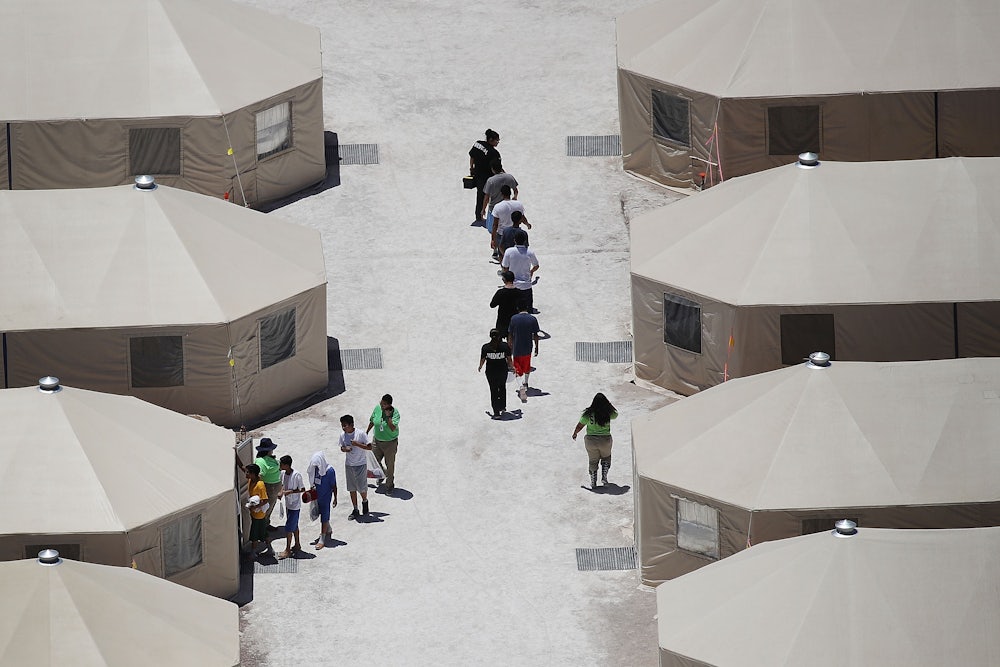How much will President Donald Trump’s child separations cost taxpayers? The answer is most definitely hundreds of millions, and potentially billions. And whatever the final cost is, it will be leaps and bounds more than the price of keeping migrant families together.
A Wednesday report from NBC News found that it costs the government $775 per night for a migrant child to stay in one of the newly created tent cities for minors—about the same per-night price for a suite at the Trump Hotel in D.C. In comparison, it would cost about $298 per child per night to stay with their parents in detention centers run by U.S. Customs and Immigration Enforcement, NBC reported.
With more than 2,000 kids already separated from their families at the border, that per-night cost starts to add up. The average amount of time migrant children spend in temporary shelters is 51 days, according to government data. At $775 per night, an average stay for 2,000 would cost taxpayers about $79 million. Some officials expect the number of seized migrant children to reach 18,500 by the end of August. If that happens and NBC’s cost analysis holds true, the taxpayer bill would be about $731 million.
The Trump administration has already dedicated more than $458 million in contracts to one Texas non-profit, Southwest Key Programs Inc., to care for immigrant children. And it will likely spend much more. According to the Daily Beast, defense contractors have “advertised a flurry of jobs in recent weeks to support the infrastructure surrounding undocumented children.” Those contracts don’t just include housing and caring for children; one contractor has already earned $43 million for transporting them around, the Beast reported. In addition, thousands of separated migrant children are expected to eventually enter the foster care system, which is funded by both state and federal governments.
2/ Taxpayers have paid more than $1.5 billion in the past 4 years to private companies operating immigrant youth shelters accused of major lapses in care. https://t.co/KPaVYax4kx
— Texas Tribune (@TexasTribune) June 20, 2018
In April, Trump also signed a memo ordering the end of “catch and release”—a policy under which migrants are strapped with GPS-monitored ankle bracelets and released from detention while they await their court hearing. Those bracelets cost far less per day than keeping migrants in detention centers, and they’re effective; most people wearing them show up to their court date. Cost-effectiveness, however, does not appear to be the Trump administration’s priority at the moment.
